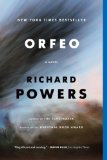Summary | Excerpt | Reading Guide | Reviews | Beyond the Book | Read-Alikes | Genres & Themes | Author Bio

This article relates to Orfeo
In Orfeo, the protagonist Peter Els sees many similarities between gene structures and music. "Genomics was right now learning how to read scores indescribably beautiful," Powers writes. And while the book talks about an entire segment of study that is called "biocomposing" with its own dedicated journal and conference, research reveals the projects to be still scattered and not quite corralled into a sturdy discipline.


Since the essence of music can be boiled down to a series of notes, it makes sense that most patterns observed in the universe could be "set" to music. Here are some examples of music derived from science:
 Can you think of any scientific phenomena that can be translated into music? The beating of a hummingbird's wings maybe, or even a child's heartbeat in a mother's womb?
Can you think of any scientific phenomena that can be translated into music? The beating of a hummingbird's wings maybe, or even a child's heartbeat in a mother's womb?
first and second images taken from Nathalie Miebach's website. Nathalie is visual artist who works at the intersections of visual art, science and music. In recent projects she has been "translating weather data collected in cities into musical scores, which are then translated into sculptures as well as being a source for collaboration with musicians."
third image of hummingbird from Wikipedia
Filed under Music and the Arts
![]() This "beyond the book article" relates to Orfeo. It originally ran in January 2014 and has been updated for the
September 2014 paperback edition.
Go to magazine.
This "beyond the book article" relates to Orfeo. It originally ran in January 2014 and has been updated for the
September 2014 paperback edition.
Go to magazine.




Outside of a dog, a book is man's best friend. Inside of a dog it's too dark to read.
Click Here to find out who said this, as well as discovering other famous literary quotes!
Your guide toexceptional books
BookBrowse seeks out and recommends the best in contemporary fiction and nonfiction—books that not only engage and entertain but also deepen our understanding of ourselves and the world around us.